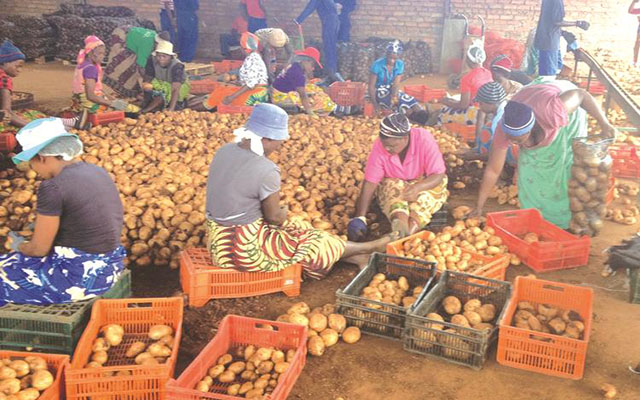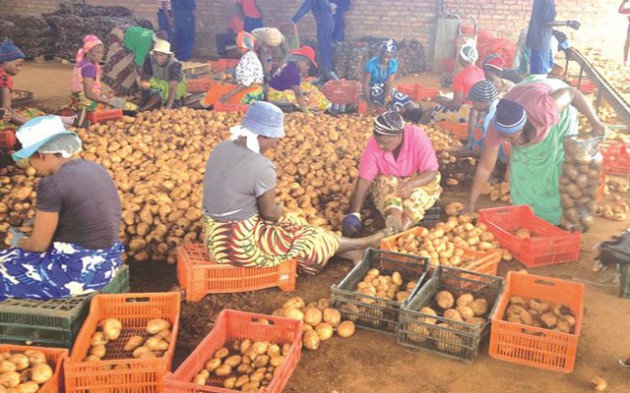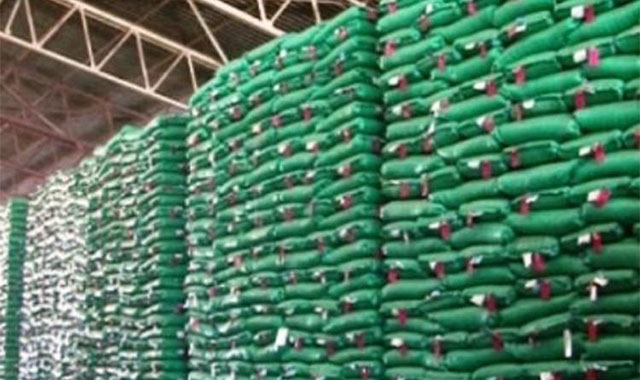Significance of financing that responds to consumption patterns

Charles Dhewa
While it might seem Zimbabweans favour sadza and nyama, there is mounting evidence showing increasing changes in consumption patterns. By handling more than 80 different agricultural commodities daily, informal agricultural markets are major accelerators of this trend. Many urban and rural consumers have acquired tastes for commodities whose production they may not know much about in terms of origin or production patterns. New consumption patterns are defining a strong case for organized marketing and consistent supply of commodities to diverse consumers whose willingness to pay is becoming linked to increase in health consciousness.
In response to these dynamics, flexible financing should be available for local institutions that understand the context and behaviour of different commodities as opposed to saturating one or a few commodities with all the support. To the extent that they understand the movement of commodities in both formal and informal markets, traders and other intermediaries are becoming financial advisers of the future.
Informal agricultural markets continue to be at the centre of gravity for the country’s food ecosystem. More than 75 percent of food in Zimbabwe continues to pass through informal agricultural markets such as Mbare in Harare, eMalaleni in Bulawayo, Sakubva in Mutare, Garikayi in Masvingo, Kudzanayi in Gweru and kwekwe food market, to mention a few.
Insights from three agricultural commodities
Potatoes, butternuts and green mealies are some of the commodities that are stamping their authority in consumer choices. These commodities’ close inter-dependencies with the whole food basket in informal markets is becoming more remarkable.
Potatoes
Potatoes have several strengths. They are now almost available throughout the whole yea main sources being Nyanga, Mazowe, Beatrice, Banket and Chegutu, among other surrounding areas. This year, an increase in potato production and consumption has been visible through more than 400 tonnes of potatoes passing through Mbare market daily during the month of October 2017. This trend is likely to continue for the whole festive season until January 2018. Potatoes have become a staple food for both rural and urban households. It is now common for school children to have potatoes in their tuck.
Since they are not highly perishable, potatoes are much easier to store until prices improve or stabilize. On the other hand, price elasticity is not a problem in potato trading and that is critical for business planning. While on-farm, potatoes can be bought for at least $5-$6/pocket, the market price often hovers around $7 – $9. Even if supply may outstrip demand, there is no way the price of a 15kg pocket of potatoes can go down to $3. This is unlike tomatoes which can go from $7 a crate to 50c a crate during extreme circumstances.
Again, potatoes are not produced in every part of Zimbabwe like tomatoes and vegetables which are now increasingly found in every garden almost everywhere. Major production zones are Manicaland and Mashonaland provinces. That means areas which do not produce potatoes constitute a stable demand zone and these include Masvingo, Matabeleland provinces and large parts of Midlands. The fact that potatoes can be produced under both dryland and irrigation schemes can ensure consistency in supply once the market is reliably stimulated.
Another advantage with potatoes is economies of scale. One can move big trucks in meaningful volumes in ways that make business sense. Given that potatoes are part of a dominant value chain, there is room for bulk supplying wholesaling, retailing and vending.
This increases the demand chain. Both urban and rural consumers are now eating potatoes and using it in various ways such as relish. As a result, each grade has a market and it is possible to easily segment the market into fast food chains, mobile catering services, households (some of who buy small potatoes called chats), and an expanding seed market.
There is also little room for wastage. In addition to not being affected by direct imports compared to onions and other commodities, potatoes do not have close substitutes. There are minor cases where sweet potatoes substitute potatoes for breakfast but sweet potatoes cannot be consumed as relish or as additives in rice. The potato can also over-take meat but cannot be over-taken by meat, especially beef and chicken.
Squash butternut
To the extent that there is significant commonality between potatoes and squash butternuts, butternuts have the same advantages as potatoes. For instance, they are not perishable and cannot be produced in every part of the country. Butternut can easily be stored for up to six months, during which period quality will be improving. The butternut has carved its own peculiar tastes and preferences among consumers across all income levels.
The fact that it is close to a pumpkin has seen the butternut gaining a foothold among rural consumers, especially professionals working in schools, hospitals and residence at rural growth points like Gokwe, Murambinda, Mubaira, Lupane, Nkayi among others. The butternut has also joined a number of nutritional foods and this has seen it being recommended for patients. This means health centres like hospitals are becoming a big market.
From an economies of scale perspective, just like potatoes, butternuts can be profitably moved in large volumes. There is also scope for value addition as seen by the high number of young people employed to load and off-load potatoes and butternuts. For instance, each 20 ton truck full of these commodities can employ at least seven young people.
Opportunities for barter trade are also huge, for instance in dry regions like Chivi where butternut can be exchanged with small grains or groundnuts. The festive season is a major period when these commodities are in high demand. Many urban dwellers who migrate to rural areas for the festive season buy potatoes and butternuts. Both butternuts and potatoes can be grown by A1, A2 and communal farmers who can make an income from such meaningful crops and be able to fully utilise their resources.
Green mealies
The consumption of green mealies has been rising among the urban and rural population over the past few years. Urban people do not have the time and space to grow green mealies since they have small spaces for vegetables. Green mealies have a huge market due to vending, especially at long distance bus stations and along roadsides like Selous near Chegutu.
While vendors may not be able to go and fetch green mealies in bulk from far-flung farming areas, they have direct access to cash because people who travel on buses buy in cash and do not swipe or use eco-cash. Most households can also afford green mealies. Green mealies provide options for farmers who can produce them for commercial purposes while using grain for food security. Such options are often missing in other commodities.
In addition, green mealies provide enough room for negotiation. You can buy a dozen of cobs for a dollar and sell for $3 a dozen. When dry, green mealies become staple grain while when green it is more of horticulture. Green mealies also have favourable economies of scale. It is possible to move volumes and, in the event of minor gluts, one can simply reduce the price slightly and still be able to make a profit.
From a budgeting perspective, green mealies do not go above $1,50 per dozen on-farm and in the market the price range is $2 – $3,50 per dozen. Price stability on the market informs sourcing strategies while stable prices enable farmers to control their costs. Consumers have acquired enormous tastes for green mealies. That is why you can see permanent green mealie roasters along major roads and in residential areas.
Towards sustainable outcomes
Besides signalling changes in consumption patterns, informal markets have a way of prioritizing staple food crops as insurance against shocks like drought and market failure that usually affect monocrops such as tobacco and cotton. They also lessen fragmentation across the value chain. It is important to encourage agricultural interventions where sustainable and fair outcomes are optimized rather than forcing farmers into a few traditional value chains. Using evidence to clearly define and understand an agricultural-based economy is vital and can assist in managing tensions between priorities.
A financial facility should be set up to enable the purchasing and mobilization of agricultural commodities that are becoming a key part of the food basket. In the absence of such efforts, contradictory and fragmented policies undermine current and future development in ways that reverse hard-won gains.
- Charles Dhewa is a proactive knowledge management specialist and chief executive officer of Knowledge Transfer Africa (Pvt) (www.knowledgetransafrica.com) whose flagship eMKambo (www.emkambo.co.zw ) has a presence in more than 20 agricultural markets in Zimbabwe. He can be contacted on: [email protected] ; Mobile: +263 774 430 309 / 772 137 717/ 712 737 430.









Comments